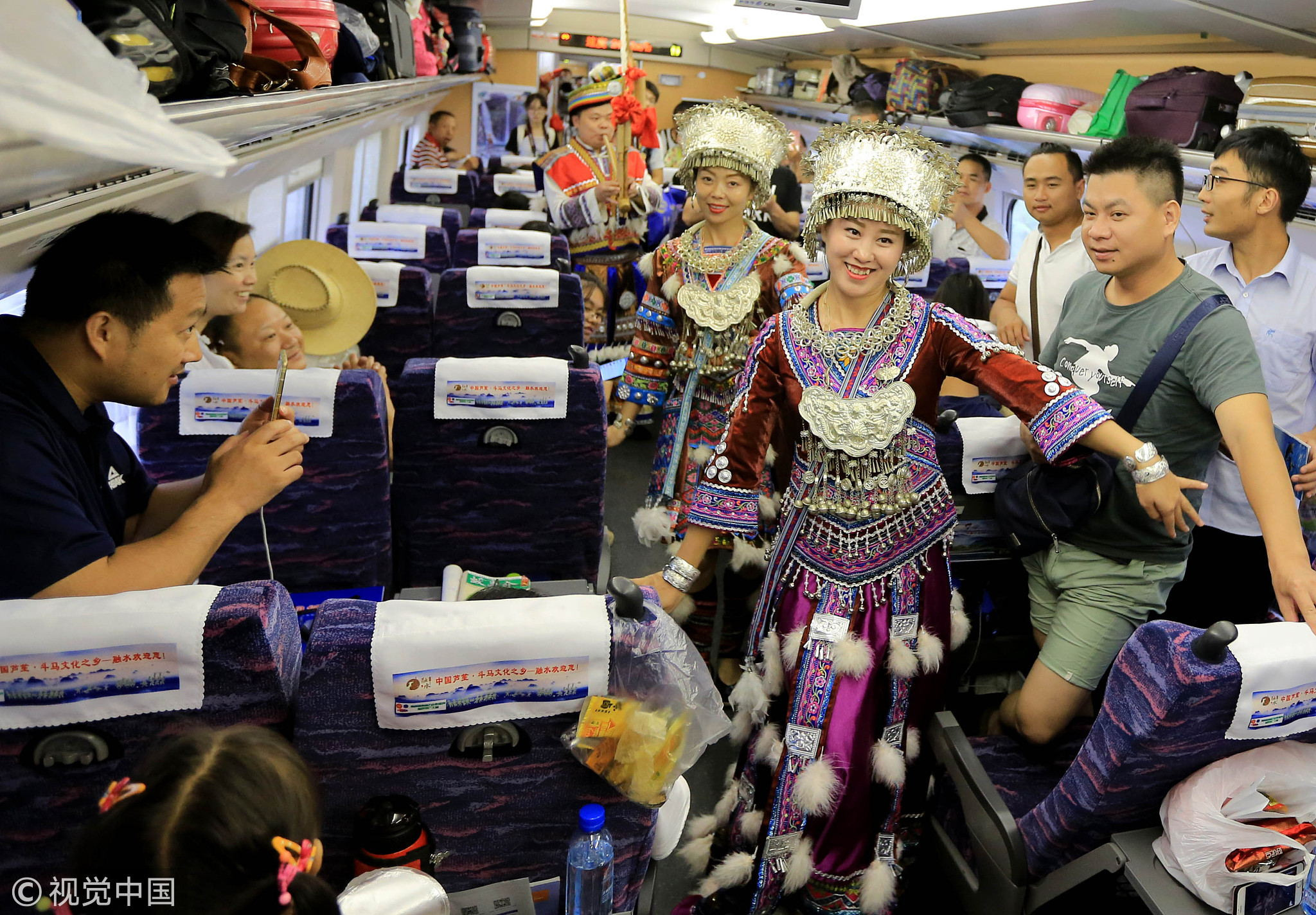
Travel
12:00, 29-Nov-2018
High-speed trains drive Guangxi's development
Updated
11:12, 02-Dec-2018
CGTN

Guilin in south China's Guangxi Zhuang Autonomous Region is known for its picturesque karst mountains and beautiful rivers. With high-speed trains linking Hong Kong and the Chinese mainland, Guilin and its neighboring cities have become a big attraction for visitors from Hong Kong and Macao.
In October, Guilin received 54,500 tourists from Hong Kong and Macao, up 39 percent year on year, as the Guangzhou-Shenzhen-Hong Kong Express Rail Link line went into operation in September, which has shortened travel time between the cities to three hours and 19 minutes.

People of Miao ethnic group pose for photos with a high-speed train in Nanning City, south China's Guangxi Zhuang Autonomous Region, July 1, 2018. /VCG Photo
People of Miao ethnic group pose for photos with a high-speed train in Nanning City, south China's Guangxi Zhuang Autonomous Region, July 1, 2018. /VCG Photo
Before 2014, only one rail route passed through Guilin. The trains were slow, putting off many potential visitors.
In 2014, the Guiyang-Guangzhou high-speed railway connecting Guiyang and Guangzhou, capitals of southwestern Guizhou Province and southern Guangdong Province, went into operation, making travel times shorter.
There are currently nine stations Guangxi for high-speed trains, with more than 200 trains making stops each day. The trains connect Guilin with many cities across the country.

The Elephant Trunk Hill in Guilin, south China's Guangxi Zhuang Autonomous Region. /VCG Photo
The Elephant Trunk Hill in Guilin, south China's Guangxi Zhuang Autonomous Region. /VCG Photo
The Guiyang-Guangzhou High-speed Railway connects many of Guangxi's tourism cities like Hezhou and Guilin. The short travel time has contributed to a tourism boom in Guangxi, with many tourists choosing to visit the city on weekends.
The trains have boosted local tourism. According to Guilin's transport authorities, Guilin saw 38.7 million tourists for the whole year of 2014. The city received close to 80 million visitors in the first three quarters this year.
Guangxi is home to multiple ethnic groups, and the high-speed trains have brought many visitors to their villages tucked away in the mountains.

Artists from Miao ethnic group perform folk dance in a high-speed train, July 1, 2018. /VCG Photo
Artists from Miao ethnic group perform folk dance in a high-speed train, July 1, 2018. /VCG Photo
This year marks the 60th anniversary of Guangxi's founding as an autonomous region. In 1958, Guangxi had just three railways, spanning 1,346 km, connecting with neighboring provinces. Sixty years later, the railway route length has expanded to 5,191 km, including 1,771 km for high-speed trains.
In Guilin, a "high-speed railway economic belt experimental area of cooperation for Guangdong, Guangxi and Guizhou" has been established. The area is being developed and is expected to become an economic hub worth 10 billion yuan.
"Guangxi is China's first ethnic autonomous region to have high-speed trains, which has put the region's development on fast track," said Kang Wei, with the Nanning branch of China Railway.
Source(s): Xinhua News Agency

SITEMAP
Copyright © 2018 CGTN. Beijing ICP prepared NO.16065310-3
Copyright © 2018 CGTN. Beijing ICP prepared NO.16065310-3